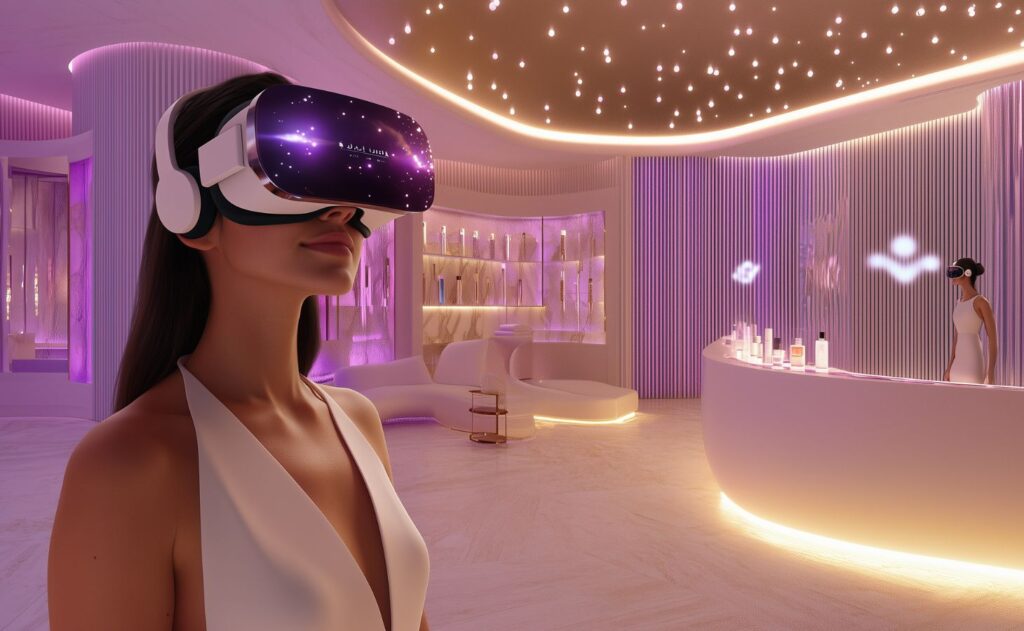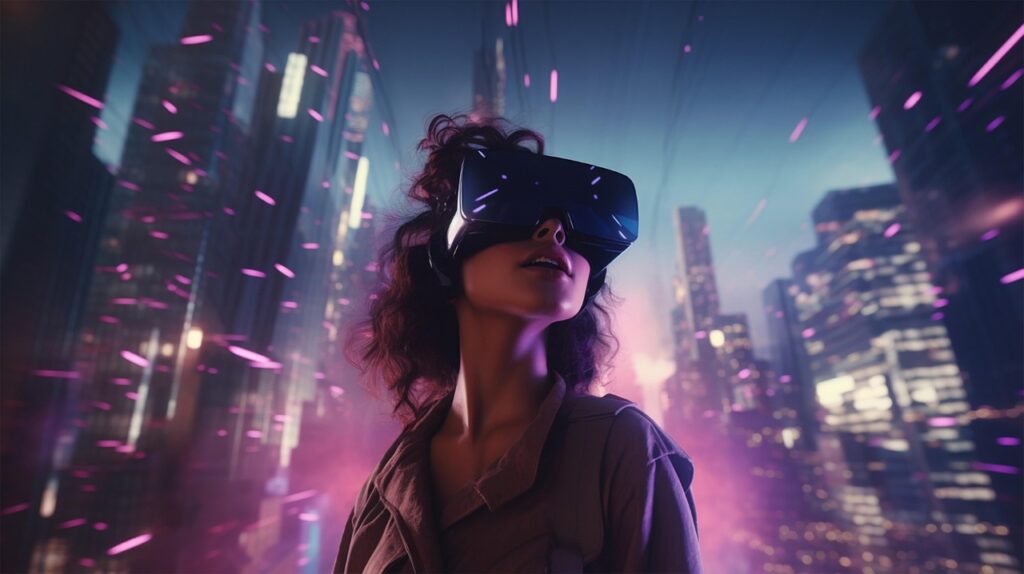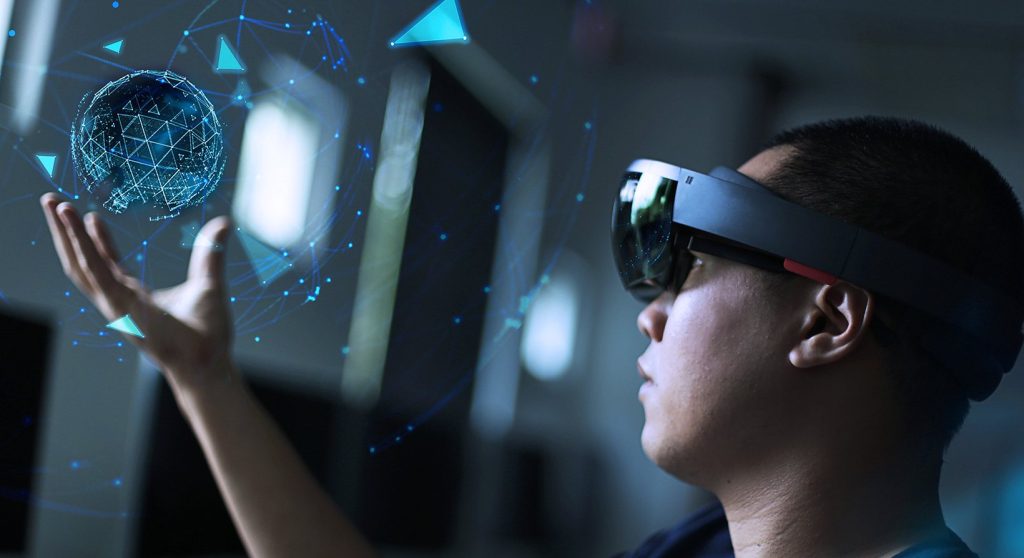In the past, many considered virtual Reality a futuristic gimmick straight out of a sci-fi movie. Today, when talking about VR, we refer to a practical tool that profoundly transforms how brands communicate, captivate, and convert their audience into active customers.
In today’s dynamic digital landscape, the challenge isn’t just getting noticed anymore: it’s all about keeping users engaged long enough to make an impression. Traditional ads scroll by; emails get archived, while immersive experiences are remembered.
Nonetheless, the power of VR Marketing doesn’t stop here since this technology offers more than just a tech upgrade on traditional advertising approaches. It is a strategic shift that brings emotion, interaction, and innovation to the core of your brand experience.
What Is VR Marketing?
VR Marketing invites people to step inside a brand’s story, using specific hardware and advanced interfaces to explore branded environments where users can interact directly with products, navigate spaces, or experience scenarios that showcase your business’ value in a tangible, emotional way.
Different from traditional formats, VR removes the limitations of space and time, offering unlimited opportunities in terms of scenarios and spectacularity to promote your company’s products or services. Shortly, VR allows for strategic, interactive, personalized, and, most importantly, memorable storytelling.
Key Applications of VR in Marketing
Virtual Reality doesn’t just represent a tech novelty; it is a versatile tool with real, strategic use cases across the marketing spectrum. Among some of the most impactful ways businesses are adopting VR today, we can find:
1. Virtual Product Demos and Try-Ons
With VR, brands can place products directly into users’ hands through simulated experiences. Whether it’s trying on clothes, test-driving a car, or exploring the features of a new tech gadget, virtual demos remove hesitation and boost buying confidence.
It’s especially valuable for e-commerce, where physical interaction isn’t possible. Virtual Product Demos bridge the gap between curiosity and commitment, allowing users to engage with your offering in a personal, memorable way.

2. Branded Games and Interactive Challenges
Gamification adds fun, competition, and shareability, letting brands turn their message into an interactive experience. Treasure hunts, product-based challenges, or story-driven games are perfect examples. They are not only entertaining but also drive engagement, encourage exploration, and lead to viral exposure, activating emotion and attention.
3. Complete Storytelling Experiences
Immersive storytelling allows brands to put their audience in the center of the narrative. Companies can guide users through a virtual journey that embodies their values, mission, or campaign themes. Whether it’s a behind-the-scenes factory tour or a cinematic brand story, this format makes storytelling more impactful and immersive, making people not just hear the message but also feel it through a deep emotional layer.

4. Immersive Training and Tutorials
One of the most powerful uses of VR for business strategies is to educate and empower through hands-on learning. From customer education to internal onboarding, tutorials can walk users through product features, safety protocols, or brand values, making learning more intuitive and enjoyable. Involving such solutions in your marketing strategies shows that your brand invests in a clear and high-quality user experience.
5. Virtual Trade Shows, Pop-Up Shops, and Branded Environments
VR makes you forget about the limitations of physical space, letting you host global events, launch products, or showcase collections in fully immersive branded environments. Visitors can interact with displays, chat with avatars, and explore your offering from the comfort of their homes, extending your reach while delivering a high-end, personalized experience that sets your brand apart.
The Benefits of VR Marketing for Businesses
VR has become essential for future-focused business strategies due to the many benefits it brings to companies, such as:
High-Impact Engagement
In a world flooded with content, attention is the new currency. With VR hardware and 3D environments, users aren’t just viewers; they are becoming active participants. This creates a depth of engagement that static ads can’t compete with.
Emotional Resonance
Experiences create emotions, and emotions drive decisions. When someone explores your virtual store, meets your brand ambassador in 3D, or completes a VR challenge you’ve designed, they walk away with a memory, not just a message.
Stronger Brand Differentiation
VR positions your company as bold, modern, and innovative, especially in competitive industries where differentiation is key. VR doesn’t help your business just in marketing; thanks to its immersive potential, it contributes to the development of a strong brand image.
Flexibility and Cost-Efficiency
Thanks to virtual events and promotional messages, companies no longer have to rent venues or print thousands of advertising materials. Generally speaking, VR Marketing optimizes strategies and initiatives logistically and economically.
Data and Analytics
VR platforms often come with advanced tracking tools, allowing professionals to see what users look at, how long they stay, and what they interact with. This information helps refine messaging and improve campaign ROI.
Successful VR Marketing Campaigns
The true power of VR Marketing is best seen in action. Around the world, leading brands are already adopting immersive technology to reimagine customer engagement, and the results are both creative and commercially compelling. Here are some standout campaigns to illustrate how VR is shaping modern marketing:
1. Ikea - Virtual Furnitures
Ikea adopted VR to allow users to design and explore virtual kitchens. This interactive experience allowed shoppers to walk around different layouts, change cabinet colors, and test configurations in real time. This solution helped because it allowed customers to visualize their dream kitchen, reducing hesitation and encouraging purchase.
2. Adidas - VR Training App
Adidas created a VR training app that allowed users to participate in workouts led by professional athletes, all within immersive environments. These experiences were used as consumer engagement tools and internal team-building content, blending content marketing with wellness and lifestyle branding to provide real value to users while valuing the company’s philosophy.
3. KOREK Telecom - VR Brand Experience
YORD partnered with KOREK Telecom to develop an interactive VR Campaign. Rather than presenting a static brand message, the experience invited users into a futuristic environment where they explored new technologies and services. By perfectly aligning with KOREK’s brand identity, this experience created a memorable, tech-forward impression that encouraged engagement and trust.
3. Bentley - XR Configurator
With YORD’s help, Bentley presented a VR application that allows users to explore the brand’s history, while customizing a life-size Continental GT, with real materials and, finally, virtually drive to global locations. This solutions connected clients with the brand’s heritage and values in a more tangible and engaging way.
Enhance Your Marketing Strategies with YORD’s VR Services
The future of VR Marketing is closer than ever, with the advertising landscape changing drastically thanks to innovations like WebXR and Artificial Intelligence to make every experience more accessible and smarter.
Moreover, the arrival of hybrid solutions in physical stores allows companies to blend traditional approaches with the latest innovations. It’s safe to say that VR is a present opportunity, with brands that risk falling behind, not just technologically but also emotionally, strategically, and creatively, if they don’t adopt this technology.
VR Marketing offers more than a novelty, being a more advanced way to connect and tell a story, other than a more compelling path to building lasting relationships. If you’re ready to bring your audience closer, leave a more profound impact, and lead your market into the next era, reach out to YORD and let us help you step into the future of Immersive Advertising.
👋 Get in touch
By clicking the “send” button, I agree to the collection and processing of my personal data as described in the Privacy Policy.





